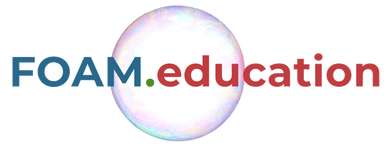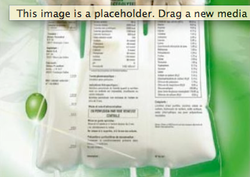 Back in 2011 a primary analysis of the EPaNIC trial was published in the New Engalnd Journal of Medicine and showed that delaying total parenteral nutrition (TPN) for one week in critically ill patients resulted in better outcomes from a range of measures includung risk of infection and earlier release. The role of weakness remained unclear. This time Hermans et al. published a prospectively planned subanalysis of this trial, where weakness was assessed in 600 ICU patients out of which 122 patients had muscle biopsies performed to study for autophagy and atrophy. They were able to show that early TPN resulted in a significant greater number of patients with weakness compared to late TPN (not before day eight after admission to ICU). Weakness also recovered faster with late TPN. Interestingly autophagy marker were higher in patients given late TPN and this was independently associated with less weakness. Dr. Van den Bergen says:"The late PN strategy, that is, not using artificial (parenteral but maybe also forcing enteral) feeding during the acute phase of critical illness, should be standard of care, as there is absolutely no good data to support benefit from such forceful feeding and there is, as we have shown, risk for harm."... and I get the feeling he might be right. Hermanns G. et al. The Lancet Respiratory Medicine, 10 September 2013; volume 1, issue 8 Casaer MP et al. N Engl J Med. 2011 Aug 11;365(6):506-17  The importance of a positive family history for the predisposition to coronary heart disease and myocardial infarction is well established. Erdmann J. et al. describe in their just published Nature article how two seperate mutations in two functional relates genes directly lead to accelerated thrombus formation in the microcirculation. The mutations have been found in a large german family out of which 23 had suffered of a myocardial infarction. Is the answer for further improvement in the treatment of myocardial infarctions maybe in our genes...? Erdmann J. et al. Nature, November 2013; nature 12722 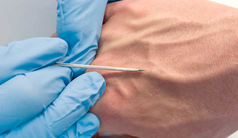 Inspired by an excellent post by Dr. Pat Nelligan on AnaesthesiaWest we would like to provide even more evidence against routine change of IV catheters... just because you are told to do so for hospital policy reasons. Brown D. et al. have provided an excellent overview article on this issue. It is clearly shown that peripheral IV catheter should be replaced as clinically indicated, rather than on a routine basis. The level of evidence here is: A. This means that this recommendation of this treatment/ procedure is effective! We add another 3 articles supporting this recommendation. We do many other things on ICU with lower levels of evidence, or even no evidence at all. So it is definitely time to change this bad habit. So Pat, I won’t do it either... full stop! Bregenzer T, et al. Arch Intern Med, January 1998; 158(2):151-6 Lee WL, et al. Am J Infect Control, 2009 Oct;37(8):683-6 Lai KK, et al. Am J Infect Control, 1998 Feb;26(1):66-70 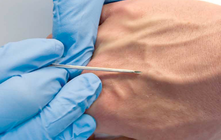 Inspired by an excellent post by Dr. Pat Nelligan on AnaesthesiaWest we would like to provide even more evidence against routine change of IV catheters... just because you are told to do so for hospital policy reasons. Brown D. et al. have provided an excellent overview article on this issue. It is clearly shown that peripheral IV catheter should be replaced as clinically indicated, rather than on a routine basis. The level of evidence here is: A. This means that this recommendation of this treatment/ procedure is effective! We add another 3 articles supporting this recommendation. We do many other things on ICU with lower levels of evidence, or even no evidence at all. So it is definitely time to change this bad habit. So Pat, I won’t do it either... full stop! Bregenzer T, et al. Arch Intern Med, January 1998; 158(2):151-6 Lee WL, et al. Am J Infect Control, 2009 Oct;37(8):683-6 Lai KK, et al. Am J Infect Control, 1998 Feb;26(1):66-70 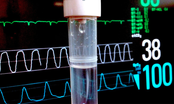 Dopamine has been widely used in the past for improving renal function but was abandoned due to lack of evidence and various potential serious side effects. In the new Heart Failure Guidelines 2013 of the AHA.pdf there is an interesting note in the section hospitalized patients with heart failure: low-dose dopamine infusion may be considered in addition to loop diuretic therapy to improve diuresis and better improve renal function. The level of evidence is IIb/B which means that efficacy is less well established and that there is greater conflicting evidence from trials. Indeed, when looking at the cited articles more questions than answer remain... but see yourself. Giamouzis G, et al. .J Card Fail. 2010 Dec;16(12):922-30 Elkayam U, et al. Circulation. 2008 Jan 15;117(2):200-205 In this randomized, non-inferiority multi-center trial in 5 swiss teaching hospitals, 314 patients that presented to casualty with exacerbation of COPD were enrolled. They were treated with oral prednisolon for either 5 or 14 days.
Results showed that a 5-day treatment was non-inferior to a 14-day treatment with regard to re-exacerbation within 6 months but significantly reduced glucocorticoid exposure. As so often: Less is more! Leuppi JD, et al. JAMA. 2013 Jun 5;309(21):2223-31 50% of all pregnant women suffer of sometimes severe nausea and vomitus, especially at the beginning of their pregnancy. In a cohort of 600’000 pregnancies, in which 25% of all women took Ondansetron, no increased risk for fetal abnormalities or miscarriages was shown. A good news for all pregnant, though the risk of QT prolongation has to be considered.
Paternak B, et al. New Engl J Med. 2013;368:814-23 Dopamine has been widely used in the past for improving renal function but was abandoned due to lack of evidence and various potential serious side effects. In the new Heart Failure Guidelines 2013 of the AHA.pdf there is an interesting note in the section hospitalized patients with heart failure: low-dose dopamine infusion may be considered in addition to loop diuretic therapy to improve diuresis and better improve renal function. The level of evidence is IIb/B which means that efficacy is less well established and that there is greater conflicting evidence from trials. Indeed, when looking at the cited articles more questions than answer remain... but see yourself.
Giamouzis G, et al. .J Card Fail. 2010 Dec;16(12):922-30 Elkayam U, et al. Circulation. 2008 Jan 15;117(2):200-205 X-rays still remain the most widely used primary investigation for query pneumothorax. In recent years, ultrasound has become increasingly popular for this question in ICU’s around the world... but what is better? This article conducted a meta-analysis including 13 studies from 2002-2012. They were able to show that pleural ultrasound is more sensitive indeed compared to chest radiography in detecting a pneumothorax. It is interesting to note, that most studies were related to trauma patients and only one was conducted by intensivists. Maybe it’s because verifying catheter positions with normal ultrasound remains challenging.
A nice tutorial can be found here: Tutorial Ultrasound for pneumothorax Saadah A, et al. Critical Care, November 2013. Provisional article, in print |
Search
|


 RSS Feed
RSS Feed


